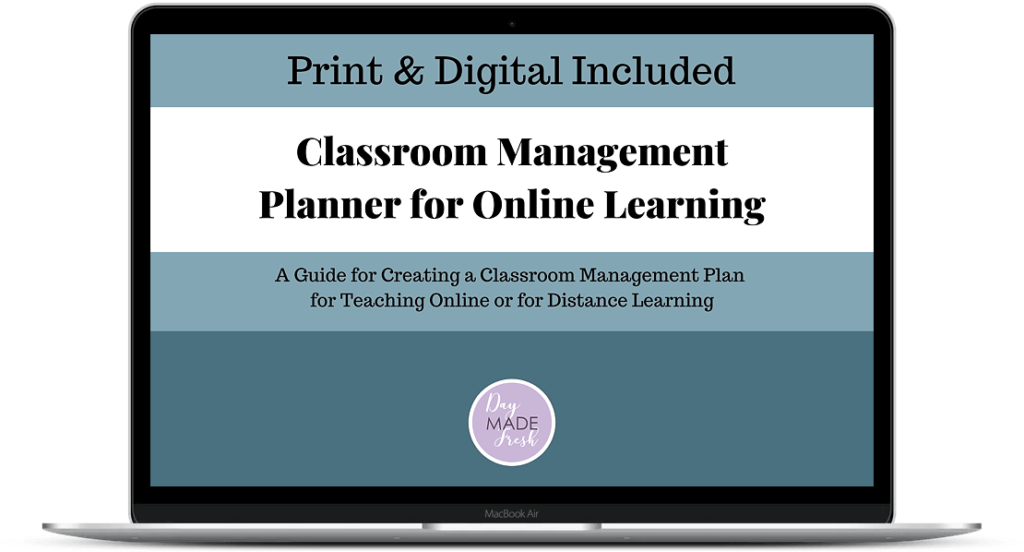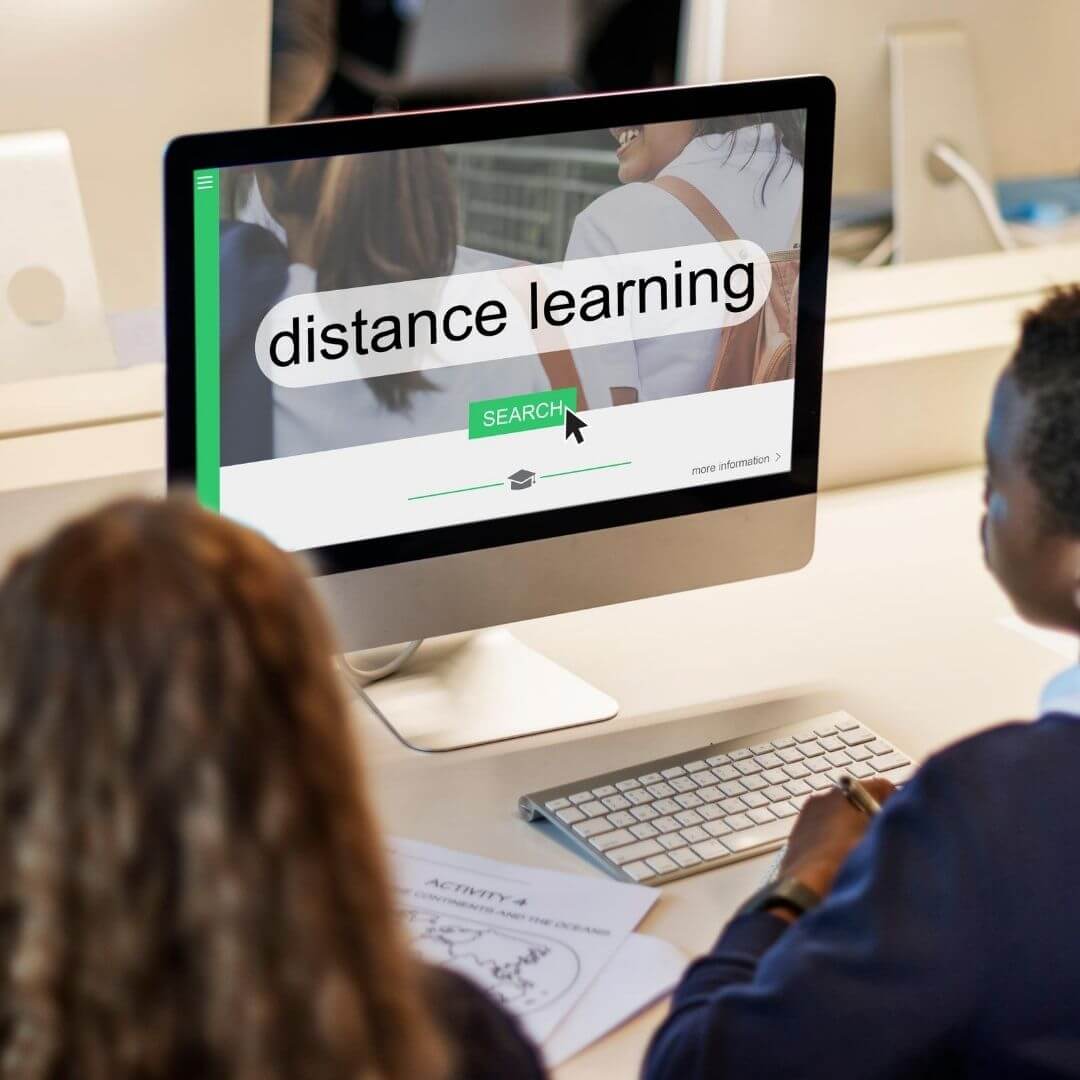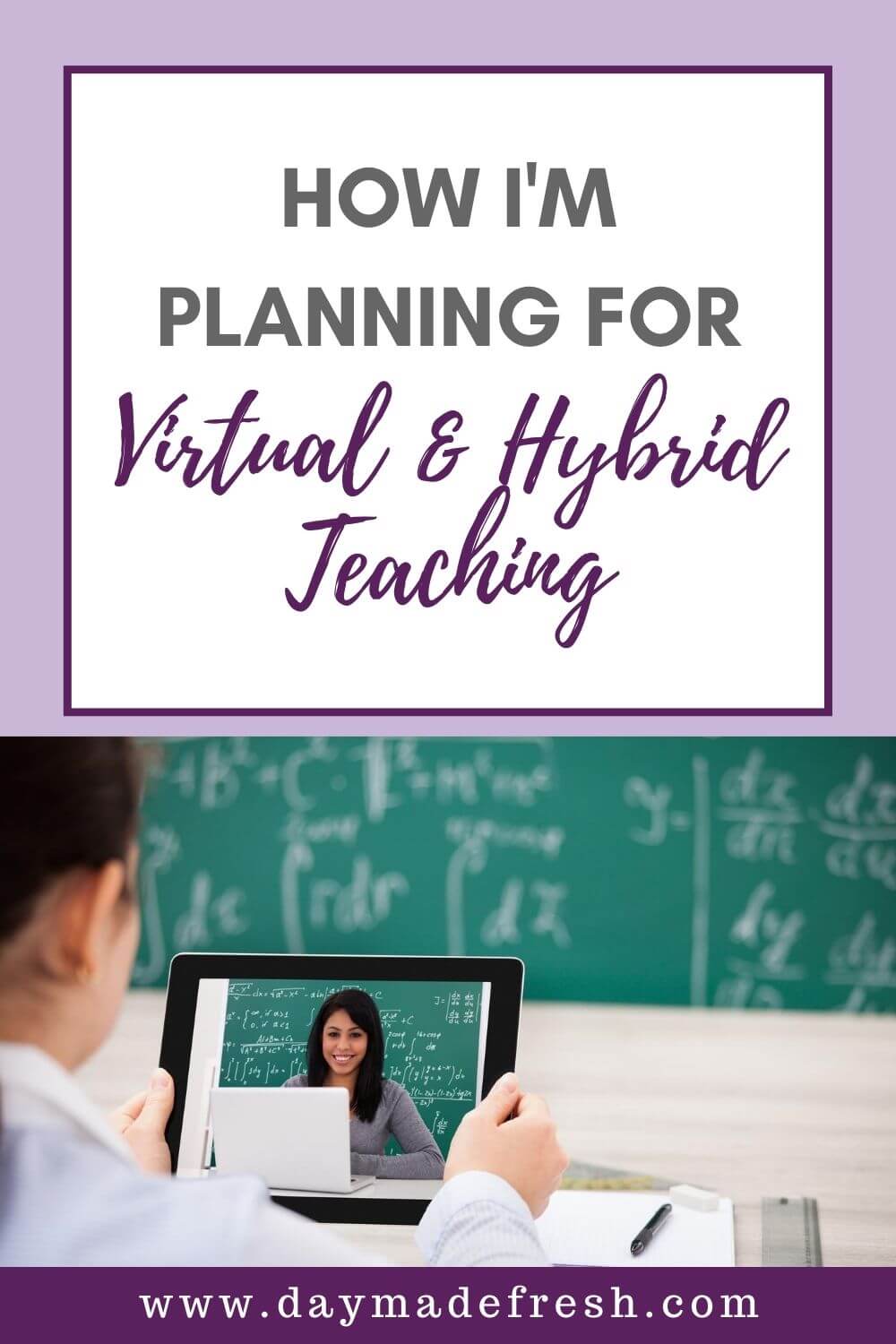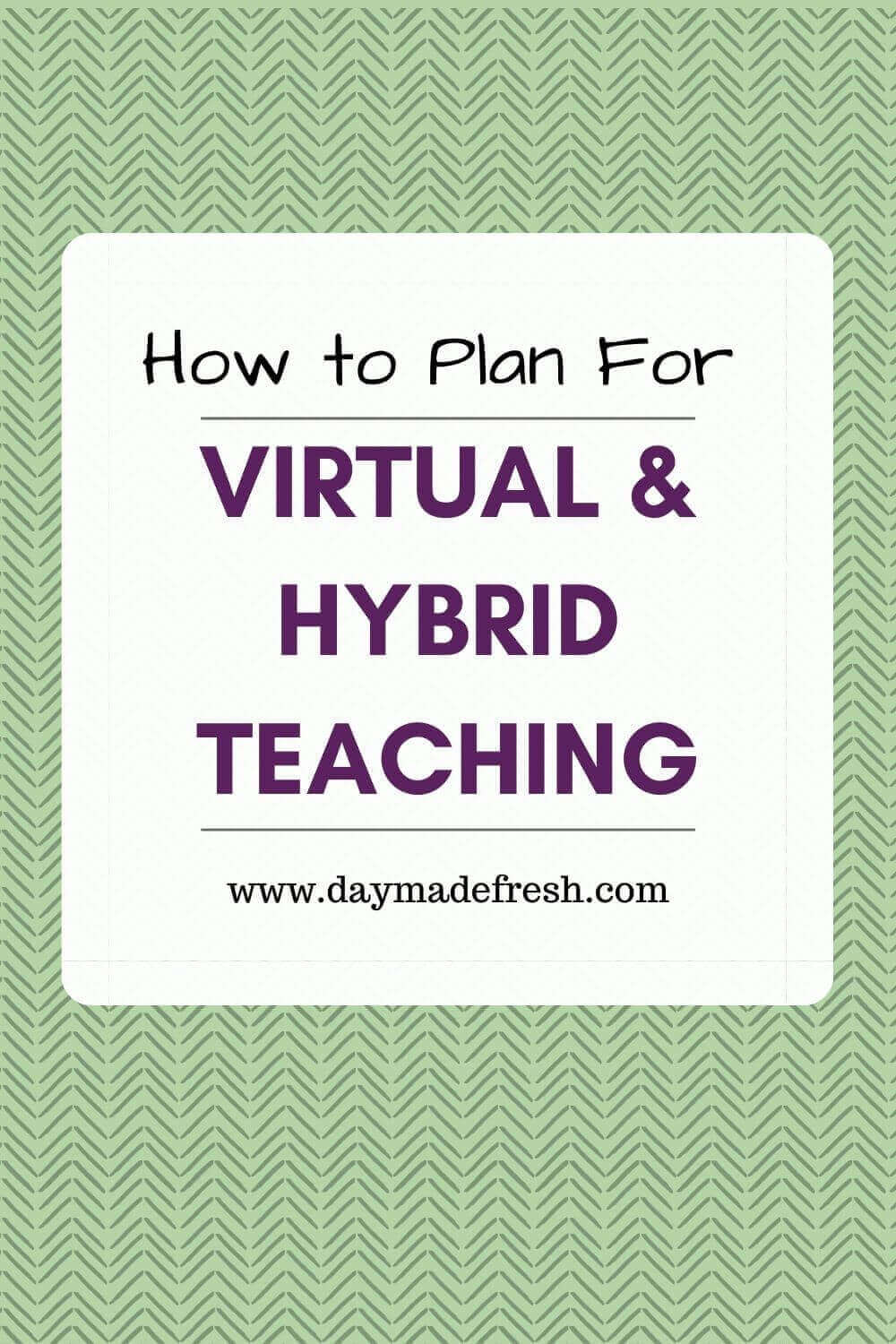One of my favorite parts about teaching is that each day is unique. I like the challenges that each new group of students brings each year. I enjoy trying to puzzle out daily schedules, curriculum maps, and more to make things work each year. I never imagined the challenges we would be facing during the 2020-2021 school year. It can easily feel overwhelming facing all the unknowns that virtual, hybrid and even face to face teaching have this year.
So, how do we plan for virtual and hybrid teaching?
Planning for this school year will be challenging. This year is going to be one of constant change. We’re going to be adapting over and over again to new schedules, expectations, state, or district requirements, etc. While it is a challenge we can and should still plan.
I don’t have all the answers, but I want to share with you how I am approaching planning for this unusual school year. My hope is that my ideas can help you or offer a springboard for your own.

Keep Plans General
As there are so many unknowns creating detailed plans will be a waste of time and effort. Focus on creating general plans that can work for virtual, hybrid, and face to face instruction. You will save yourself time and frustration. I will make plans for teaching virtually and then using those for hybrid and face to face teaching. This article, How to Make Lessons Cohesive When Teaching Remote and In-Person Classes, from Education Week (edweek.org) gives excellent examples of how to balance this.
Virtual teaching and learning is the style, of the three, that is going to take the most adjustment. For many schools, the hybrid structure will also rely heavily on virtual or online instruction. By focusing on one style of teaching I found I feel less overwhelmed and more focused.
Need help with your virtual classroom management plan? Click here to purchase the Classroom Management Planner for Online Learning.

What to Teach
To begin planning for virtual teaching it is best to have a clear view of what you want your students to learn over the course of the year. Academic objectives for the year guide how we teach and what your students will do. So this is an ideal starting point and anchor for the rest of your plans.
You don’t have to reinvent the wheel while doing this. Start by using what you already have such as district provided curriculum maps, thematic guides, scope and sequence from curriculum programs, pacing guides, etc. Then start to edit and make it your own. Based on what I’ve experienced you’ll most likely be doing a lot of cuts. It amazes me how much curriculum writers pack in.
To make things easier throughout the year I like to create what I call “A Year at a Glance.” It’s a Google Spreadsheet that shows what will be covered each week of the year in all subject areas. I use it each week as I write my lesson plans to check that I’m on track or shift things as necessary. I also find it helpful to find times when I can integrate and weave subjects together. Click here to purchase A Year at a Glance from Teachers Pay Teachers.
A few tips when planning out your year:
- Give yourself time buffers. If possible at the end of a unit give yourself a make-up day or two in case you need to reteach or you miss a day of school.
- Mark weeks that won’t follow the normal schedule or routine. Pay close attention to shortened weeks, weeks with half days, or weeks with holidays or other special events that will affect the daily schedule.
- Prepare to be flexible. As we’ve learned this past year we can’t plan for everything. Things will come up that throw off your plans. Lessons will need to be shifted, condensed, or even deleted altogether.
How to Teach
Now that you know what you will teach you’ll need to start figuring out how you will teach it. The virtual and hybrid format of teaching means we will have to adjust how we are teaching our content. Students will now be learning through a few different formats:
- Asynchronous (On their own)
- Synchronous (Live virtual lesson)
- Independent Work
- Small-Group Meetings
- Office Hours
It isn’t possible to teach everything during synchronous learning. Otherwise, you and your students would spend your entire school day on an endless Zoom meeting. I hope and pray that your district is not expecting this of you.
Instead, plan short 10-30 minute lessons for your core subjects. Teach only the most important through virtual synchronous teaching. Record the rest for asynchronous learning. As things will come up with illnesses, schedule conflicts, etc. it may be beneficial to record all your lessons. This way even absent students can watch the lesson. This would also allow students to rewatch the lesson if necessary.
English Language Arts and Math will need to be taught daily. If your schedule is tight Science, Social Studies, and other subjects might be taught every other day. Short recorded and/or live lessons will allow you and your students to have breaks from video conferencing throughout the day.
Students will then use the other formats to continue to learn and practice new skills. Depending on the students’ ages they should spend a certain amount of time working independently on or off the computer. If students need more assistance you can help them during small group meetings or open office hours.
The key is to plan out how you will teach the different objectives you want your students to master by the end of the school year. This way you are spending your instructional time wisely.

Another aspect to think about when planning how you will teach is deciding what platforms or programs you will use to deliver your instruction. As you will no longer be able to just stand in front of your students to teach.
Your administration will dictate some of this. Any program that needs to be purchased will have to be approved by the school district. Your district might also decide to have districtwide mandates of what platforms are used to keep things consistent.
There are a vast number of platforms currently on the market for us to use and many of them are free. It can be helpful to use multiple platforms or programs to teach in a hybrid or virtual setting. But you also don’t want to overdo it. If students and their families have too many programs to learn they can become overwhelmed and frustrated.
First, identify what you will need different programs or platforms to do. Think about what you will need to best meet your students’ and families’ needs. Also, think about how you can make your life easier. Find resources that help streamline your processes. Based on my experience so far, below is a list of what you want to be able to do to ensure success during virtual and hybrid learning:
- Assign, grade, and track student assignments
- Communicate with individual students & families
- Communicate with your class as a whole (like a newsletter)
- Video conference with students
- Offer interactive assignments or lessons that encourage student engagement
- Track students’ mastery of objectives/standards
- Encourage student collaboration and discussion
- Track student participation and engagement
- Manage and track student behavior
If you can find a program or platform that accomplishes more than one task even better. we all have enough on our plates learning and planning for virtual and hybrid teaching. The fewer things we and our students need to learn, as we make this transition, the better.
Classroom Management
Don’t forget to plan out how you will manage your classroom. Including how you will manage student behavior during virtual and hybrid teaching. We are faced with new challenges in these new teaching formats. Read this classroom management post to get an understanding of how to write your own classroom management plan.
As we adjust to virtual teaching you will want to include procedures and/or expectations for the following:
- Video conferencing expectations
- Participating during a video conference
- Turning in assignments
- Getting help (how to email or communicate with you or other staff members)
- Communicating or collaborating with Classmates
- A student that is sick or unable to complete assignments
This Edutopia article discusses how to create community in virtual classrooms.
Related Post: Why You Need A Classroom Management Plan
For hybrid teaching, you will also want to include procedures and/or expectations for:
- Wearing a mask or other PPE
- Social Distancing
- New expectations for traditional school activities
If you need help writing your new classroom management plan. My Classroom Management Planner can guide you through the process. It’s written based on traditional face-to-face teaching. But you can easily apply the process to this unique school year. (You can also buy the Classroom Management Planner for Online Learning to help you plan for virtual teaching.)
While a lot of what virtual and hybrid teaching will entail is still unknown we can start planning. Often if we start planning things out we can feel calmer and in control of a chaotic situation. Just because we plan something out doesn’t mean it is set in stone. As we have shown continuously shown this past year teachers are adept at being flexible. ☺️
As I learn and discover what works and what doesn’t in this new teaching format I will update this post. Have you started your plan for virtual and/or hybrid teaching? Comment below with what is working for you OR what you need help with.

